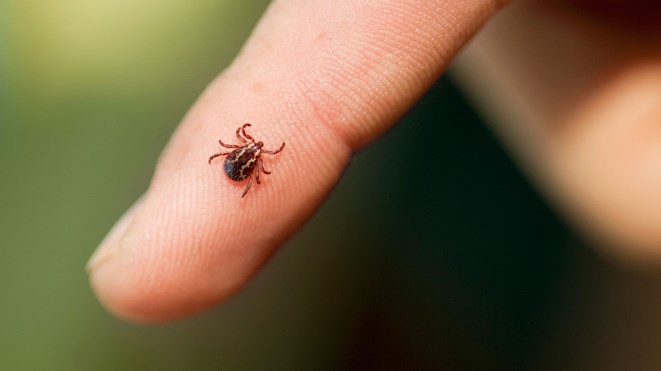Public Health Sudbury & Districts (PHSD) reported Monday laboratory results have confirmed an adult has tested positive for Lyme Disease.
PHSD said investigations indicated the disease was most likely locally acquired in the Sudbury East area.
PHSD said although reports of Lyme disease are still uncommon in this region, people still need to take steps to protect themselves when they're spending time outdoors.
"Blacklegged ticks infected with the bacteria that causes Lyme disease have been found in the Sudbury and Manitoulin districts in past years; however, they are commonly found in rural areas along the north shores of Lake Erie, Lake Ontario, Lake Superior, and the St. Lawrence River, as well as in the Rainy River area of northwestern Ontario," said a news release from the health unit.
Lyme Disease is found in most parts of southern Ontario, central Ontario and some parts of Northern Ontario.
Ashley DeRocchis, an environmental support officer with PHSD, said people need to be aware of how to protect themselves, especially if they walk around tall grass or plants.
“People enjoying the outdoors need to check for ticks immediately after activities like gardening or hiking. This is one of the simplest ways you can protect yourself from Lyme disease,” said DeRocchis.
Blacklegged ticks do not jump or fly. They wait on grass and bushes for animals or humans to brush against the vegetation. Ticks vary in size and colour and can be hard to see until they are full of blood, the health unit advised.
The health unit said avoiding a tick bite is the best solution. This would include not walking in tall grass or among tall plants. Make sure yards are kept clear of debris and overgrown vegetation, grass, bushes, and trees. The health unit also advised keeping wood piles and bird feeders away from homes.
If one is spending time outdoors, they should wear a long-sleeved, light-coloured shirt, pants, and closed-toe shoes. Use insect repellents that are approved by Health Canada and follow the application recommendations on the package.
After returning indoors, people are advised to do a tick check and make sure none of the tiny insects have attached themselves to you. Taking a shower after outdoor activities is a good practice.
If a tick is found attached to a person's skin, use fine-tipped tweezers to grab the tick close to the skin and gently pull straight up. Wash the area with soap and water, said the health unit.
If you suspect the tick has been attached for several hours, follow up with your health care provider to determine if you need treatment. Lyme disease is treated with antibiotics. If left untreated, Lyme disease can cause serious complications to the heart, joints, and nervous system
